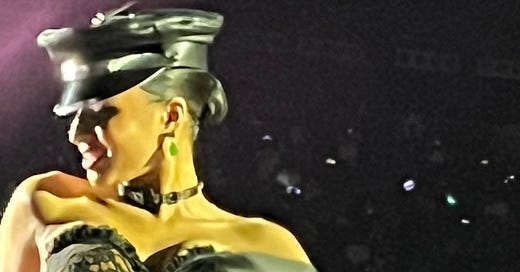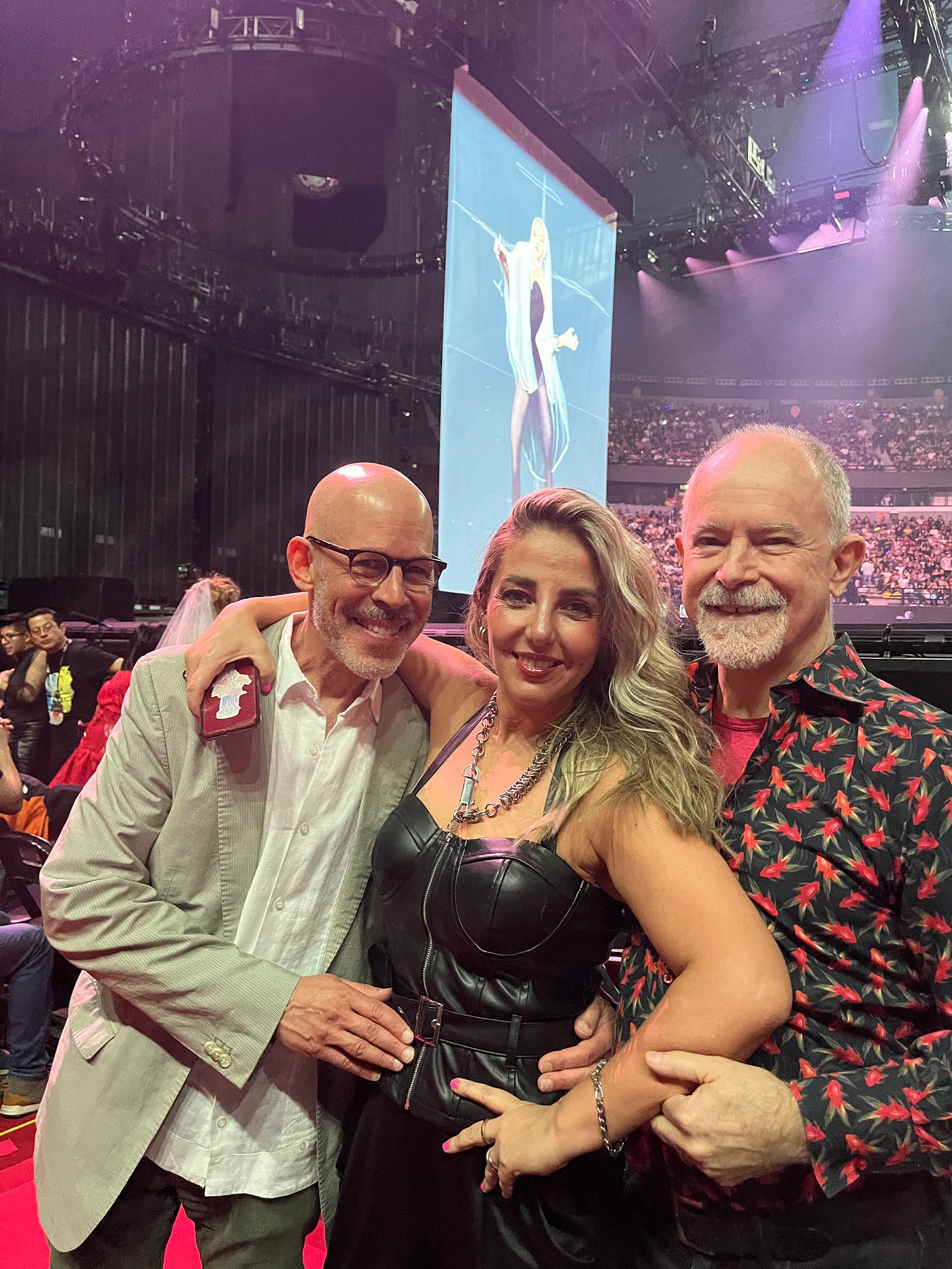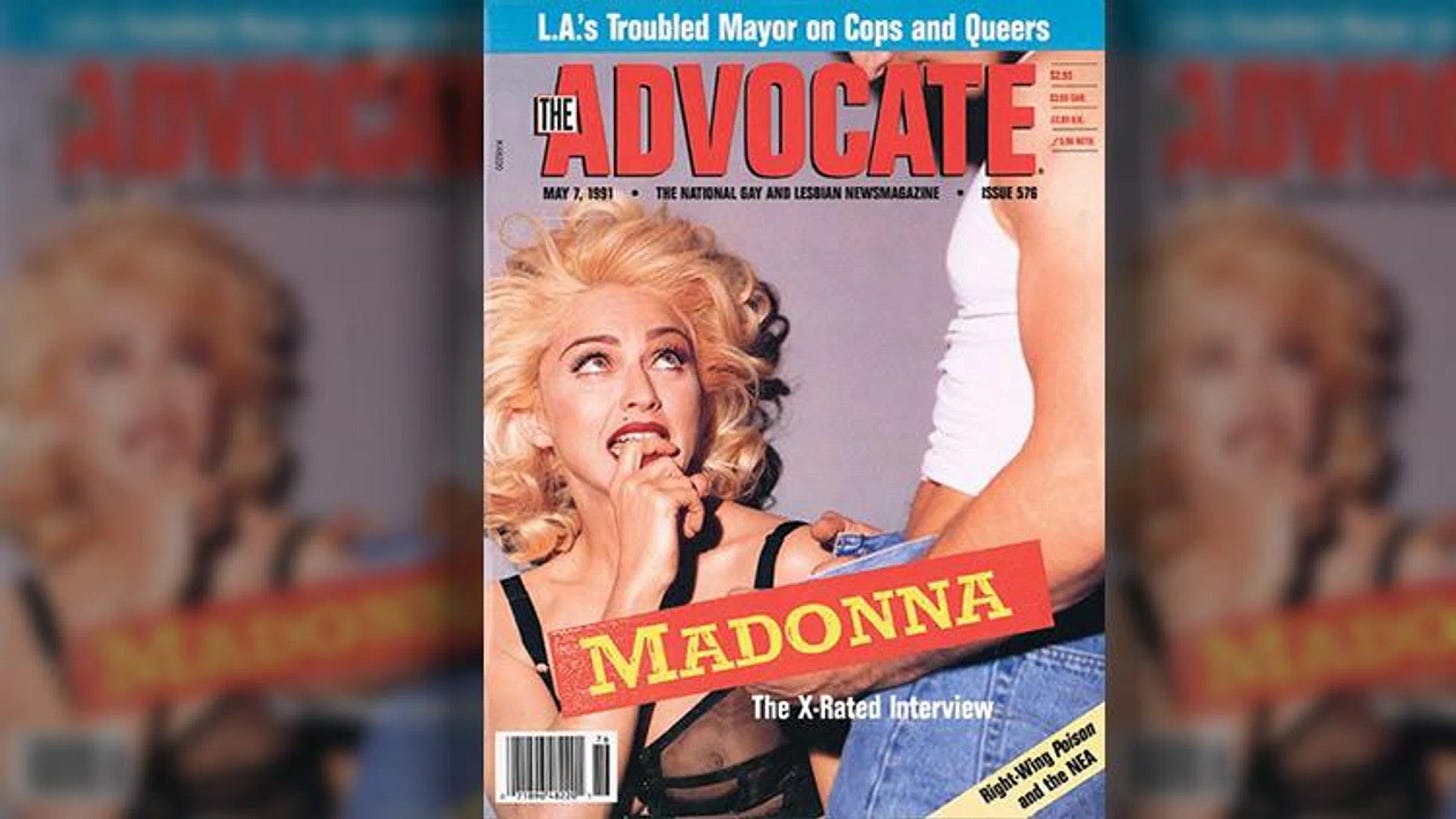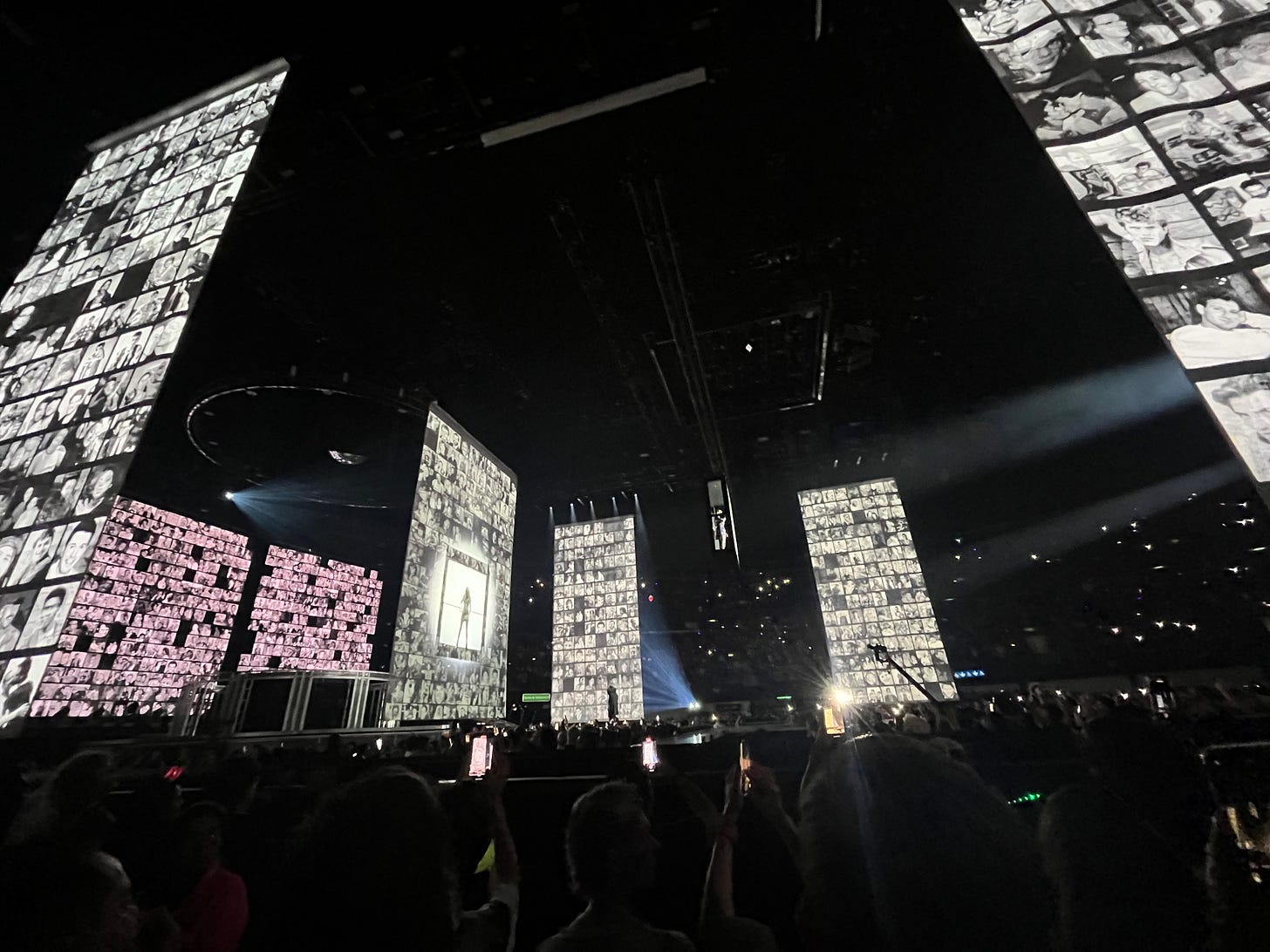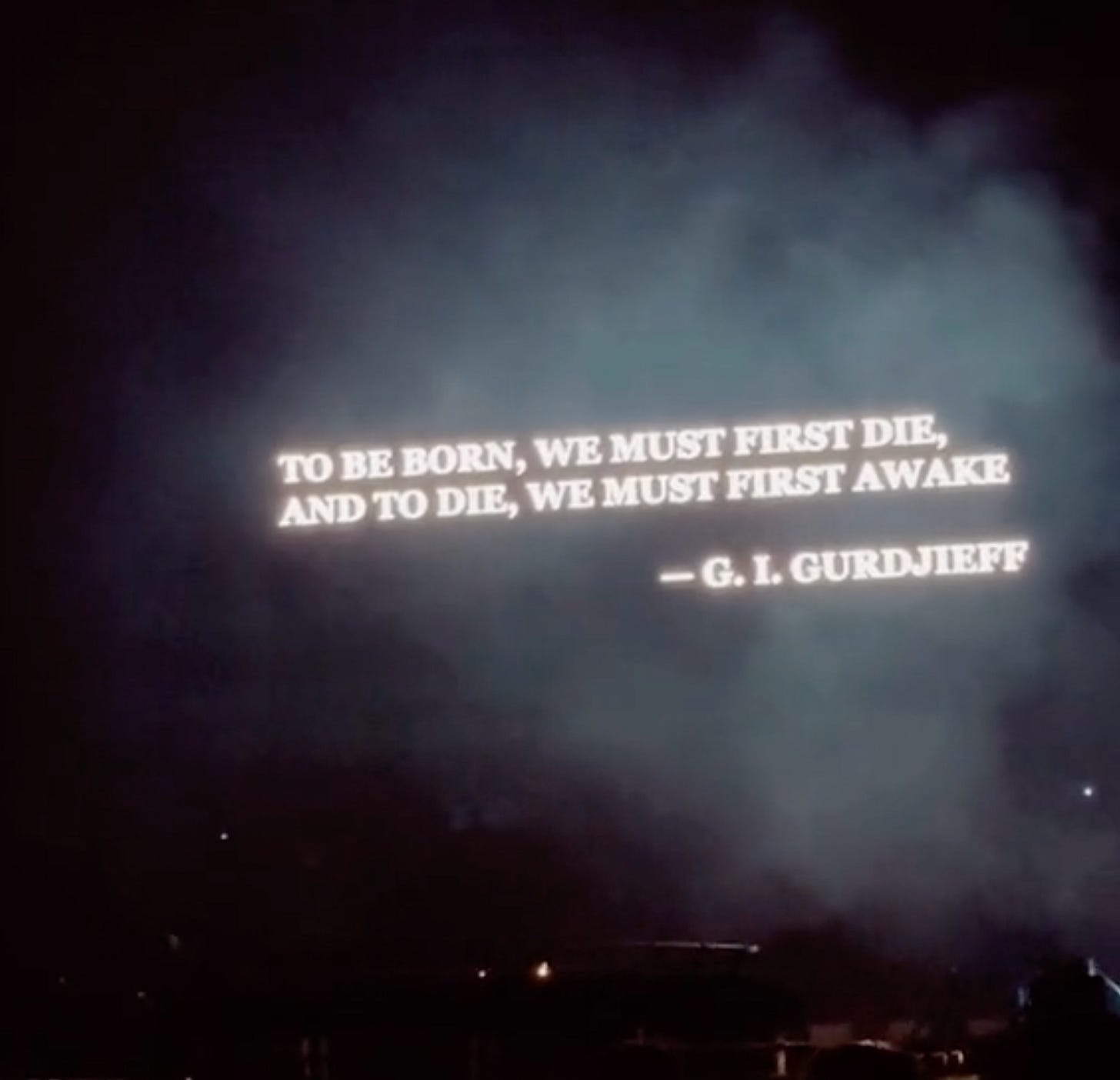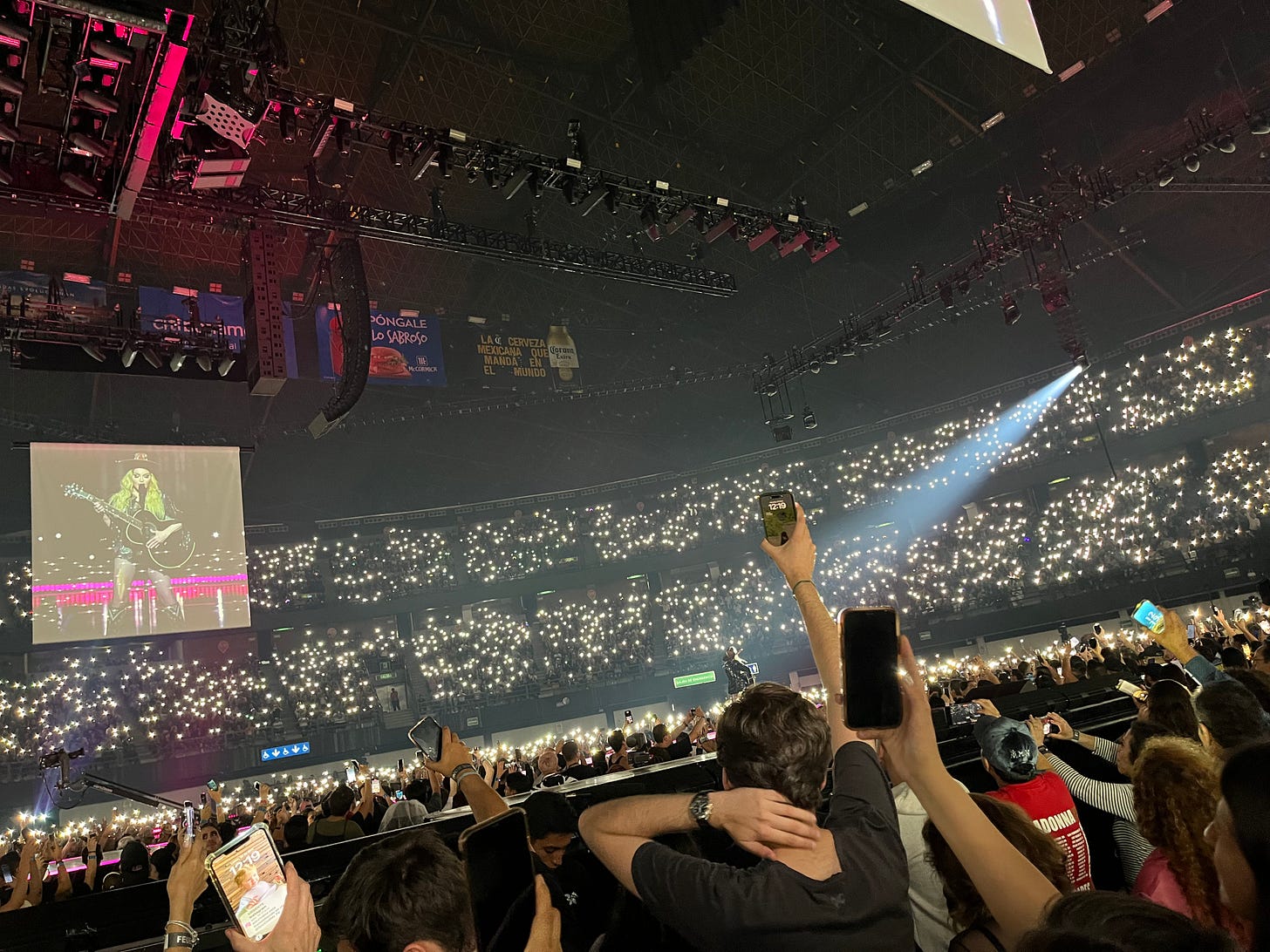Culture Vulture/Photo Diary: Madonna's "Celebration" tour
I started hearing about Madonna’s Celebration tour a year in advance from designers who’d been hired (and asked to sign NDAs) to come up with a ton of costumes for what promised to be an extravaganza. I had at least ten opportunities to see the show at the Barclays Center in Brooklyn or at Madison Square Garden. But I thought, eh, I’ve seen Madonna on tour three times: the Blonde Ambition tour (the one recorded for posterity in the documentary Truth or Dare) at what was then called the Brendan Byrne Arena in New Jersey; the Re-Invention tour (promoting her American Life album) at MSG; and the Madame X show at Brooklyn Academy of Music. I figured that was plenty for one lifetime. Plus, the tickets were insanely expensive.
And yet…I kept seeing images and videos online as the tour traveled around the country, around the world, and late one night I got it into my head that I had to see this concert. The tour was on its last swing through Miami, Austin, and Mexico City. I checked with my friend David, with whom I stay when I visit CDMX, and his response was: “I thought the concert was sold out, but if you could get tickets for me and my girlfriend, she would love me and you for the rest of our lives.” That gave me a totally altruistic motivation to leap onto StubHub and acquire insanely expensive tickets, along with a short-notice plane ticket for a three-day trip to Mexico City.
It's not like I’m the world’s biggest Madonna fan. I have my own funny connection to her. I reviewed her first album for Rolling Stone when it came out in 1983 – I liked it, didn’t love it. Her publicist, Liz Beth Rosenberg, was a friend of mine, and when The Advocate approached her in 1991 to inquire about the possibility of an interview, Liz said, “Madonna would love to be interviewed for The Advocate, and I want Don Shewey to do it.” So this plum assignment fell in my lap. It became what the magazine called “The X-Rated Interview,” because I asked her all sorts of ballsy questions, which she answered without hesitation.
This was pre-Internet, so my agent was able to sell the article to the L.A. Times, which syndicated my article to nineteen countries in eleven languages. It made me a small fortune that I lived off for the next two years. So thanks, Madge! My agent had the idea of turning the interview into a small book, the kind they stock next to the cash register in bookstores for maximum impulse purchasing. But Herself was in the process of creating her Sex book and withheld permission. Thanks again, Madge!
Truth or Dare was probably the peak of my interest in Madonna’s music. I loved the movie, and I enjoyed the next couple of albums, but after that my attention drifted. What prompted me to travel to Mexico City was less the music than the spectacle. I once made a pilgrimage to Las Vegas specifically to check out the two Cirque du Soleil shows for which special theaters were built: O and KA (the latter staged by the great Canadian director Robert Lepage, one of my theater heroes). It was in that spirit that I flew to Mexico for the Madonna show.
It was definitely worth the schlep.
I went in expecting a feel-good greatest-hits dance jam. What I got was much deeper than I anticipated, a kind of shamanic journey about self-acceptance and healing the hurt people of the world through love.
And there was plenty to see. The stagecraft throughout the show was phenomenal. I’m a theater guy, and I’ve never seen anything quite like the Celebration tour’s cutting-edge visual design. The London-based “entertainment architecture company” Stufish (responsible for dazzling concert tours by Beyoncé, Lady Gaga, Elton John, and the Rolling Stones, among others) devised a multi-platformed thrust stage with uptown, midtown, and downtown areas, east and west runways, and a giant floating picture frame that allowed Madonna and her 24 dancers to roam around, getting close to many more fans than the usual arena set-up.
Strategically placed appear-and-disappear screens and a squadron of hand-held video cameras ensured that everyone in the house could see the star in closeup almost every minute of the show. For two numbers, she inhabited “the portal,” a giant floating picture frame that could move back and forth and spin in every direction.
All the official sources freely post setlists focusing on the songs in the show, arranged in a seven-act structure. But there’s a whole other narrative that isn’t talked about as much. In the midst of the celebratory Act 1 (“Everybody,” “Into the Groove”), after playing one-chord guitar on “Burning Up” while the screens whirl with images of CBGB’s and punk graffiti, Madonna sits down next to what looks like a mannequin — it’s a person (trans, I think) in a blank mask whom she introduces as her Self. She framed the entire show as a march through time with the various phases and stages of this Self, a theme that turned up again and again for those with eyes to see.
I’d already seen one of the visual highlights of the Celebration tour online, the AIDS memorial that unfolds during “Live to Tell.” Just seeing pictures online choked me up. Not gonna lie: it was really the desire to experience this moment live that pushed me to see the show. It shows up early. Act 2 (“The Storm”) depicts the early 1980s, when her first taste of success slammed into the impact of the AIDS epidemic. She recorded the song for the soundtrack of Sean Penn’s 1986 film At Close Range, but somewhere along the line it became her AIDS anthem.
As she starts to sing “I have a tale to tell,” a screen descends with a picture of her friend and collaborator Martin Burgoyne with his dates (1963-1986 – dead at age 23). Then on another screen her high school dance teacher Christopher Flynn. Then her East Village buddy Keith Haring. Then Howard Brookner, who directed her in Bloodhounds of Broadway. I nudged my friend David and whispered, “I knew him.” Then Haoui Montaug, legendary doorman. “I interviewed him once,” said David. The pictures start coming faster and getting smaller until the entire visual field consists of black-and-white photos, ending with the dedication “To all the bright lights we lost too soon.” I was a wreck the whole time.
The early chapters of the chronicle were easy to track biographically. Act 3, “Living for Love,” covered her foray into erotica and embracing the role of sexual icon. Many scenes of bodies tangled up (including what looked like a gay male orgy Madonna plunged herself into), spooning and smooching with women, stroking her crotch or letting someone else do the honors. Act 4, “Ballroom,” constituted the “Vogue” section. Throughout all of these, she’s surrounded by a horde of male, female, and nonbinary dancers, most of whom read as queer, extremely racially mixed, hardly any white people onstage. Madonna’s 11-year-old daughter Estere held down the DJ spot on “Vogue” (her twin sister Stella shows up later boogeying down with her mom). Every night a guest joins Madonna to judge a voguing competition (the only choices are “10” or “Chop”). At our show it was Alberto Guerra, a Cuban actor I’m unfamiliar with. For the final night in Mexico City (also the final night of the tour), the guest judge was Selma Hayek in full Frida Kahlo drag.
Act 5, “The Beast Within,” is when things started to get cryptic and weird. A quote from philosopher and mystic G. I. Gurdjieff popped up on the screen. I didn’t see that coming. At the very beginning of the show Madonna had asked the crowd “Are you ready for the good…the bad…and the ugly? Because it’s going to get really ugly.” In this section she did a bunch of songs I don’t know or didn’t recognize, but I sensed that the visual imagery (some of it recycled from previous tours, apparently) referred to her interest in Kabbalah — lots of black-caped figures swooping around doing cryptic witchy things.
There were several long sections when Madonna was offstage, taking a rest or changing costumes (or checking her Insta, who knows?). A couple of these were simple anodyne memorial tributes to Prince, Michael Jackson, George Michael, Sinead O’Connor, other music icons. Then there was a long sequence in which the dancers enacted scenes of war, terrorism, refugees, torture, what I took to be references to 9/11 and Abu Ghraib. Weeping women in rags fleeing soldiers could also refer to October 7 and/or the retaliation in Gaza. OK, I thought, she promised ugly, here’s the ugly — representing, we could say, the shadow, which Kabbalah also addresses.
Central to the conception of the Celebration tour is that there are no musicians onstage. Everything is performed to tracks, which allows for maximum mobility of the dancers and singers while also ensuring maximum precision for the lighting and set changes. I’ve come to understand that this is a new paradigm for pop-music concerts. The DJ-as-opening-act, the drag-queen-as-MC, the delayed showtime, singing to tracks, big emphasis on visuals and costumes – these are not incidental, they’re not just the diva being cavalier about her audience (although it can feel that way). I get that the point is to create a festival atmosphere, a show that is about more than the music.
Some of Madonna’s vocals were obviously lip-synched. The only live instrumentation in the show, aside from her rudimentary guitar playing, came from her children. Her daughter Mercy James played piano on a stripped-down version of “Bad Girl” that incorporated elements of Charles Mayer’s “Le Regret, op. 332.” Her son David Banda played guitar on “Don’t Tell Me” (with a kid from Maryland named Matthew Jamal on cello) and “Mother and Father,” which included a visual acknowledgment of the complicated reality of parenthood when you’re adopted.
Occasionally, when she stood still, with no music or other distractions, I could understand what Madonna was saying as she addressed the audience. Towards the end of the show the music cut out and she delivered a long speech thanking the fans for their support and talking about the health crisis she encountered last year that put her in the hospital unconscious for four days. But when there were long stretches of dialogue or sung lyrics that I didn’t already know, I didn’t understand a single word of what she said. (I learned afterwards that the venue, Palacio de los Deportes, is known locally as “Palacio de los Rebotes,” because of the echo-y acoustics.)
This was most pertinent in the “Beast Within” section, during which three banks of fire lit up the “downtown” stage with figures running around in costumes I didn’t understand. Meanwhile, a pre-recorded voiceover by Madonna told a lengthy story whose gist I couldn’t grasp. Only while writing this was I able to sleuth out online that this whole number was lifted from an earlier tour and based on a 1990 remix by Lenny Kravitz of “Justify My Love,” with Madonna reading from The Book of Revelations. That knowledge reinforces my respect for the ambitious thematic underpinnings of the concert, although the way she connects the dots are not always evident to the audience.
The stagecraft throughout the show was phenomenal. For “Bedtime Story,” she hired a video game designer to create a game environment where her live figure on action-capture interacted with CGI backgrounds and scenarios, looking like something out of a Bjork video — visually spectacular, if narratively murky.
Act 7 began with the star offstage while silhouettes representing Madonna and Michael Jackson danced and traded licks from “Billie Jean” and “Like a Virgin” as the screens flashed the same few photos of the two of them together, suggesting that they’d had a famous love affair. Of course, that only existed in the media, but it did inspire me to reconsider the meaning of “Like a Virgin.” Suddenly, it seemed to be about dating someone you really like with the understand that there’s not going to be any fucking. He treats you like an untouched girl and everybody likes it that way. A somewhat more innocent reading than the song usually gets (cf. the scene in Reservoir Dogs where Quentin Tarantino floats his vulgar theory).
Speaking of reinterpretation, she did “Express Yourself” as a slowed-down ballad, accompanying herself on acoustic guitar. She invited the audience to hold up their phones with the flashlight on. This felt like the centerpiece of the show’s message. “Inside of you, we all have light,” she said. “We can and we will make a difference.” The core message is a little bit corny -- the universal proclamation that Love Is The Answer – but she puts her own specific subliminal spin on it.
Throughout the show she makes a point of spotlighting people of color, queer and trans and non-binary figures, Colombians and Puerto Ricans and Argentinians, to my mind making a very strong political statement (echoed in the slideshows of political demonstrations, Pride, Black Lives Matter, Trans Lives Matter, Women’s March, in favor of reproductive freedom, etc.). Without getting too preachy -- okay, at times preachy, at times pretentious -- I felt like in telling her own story in great detail, she was both extending a blessing to her various earlier selves but also bestowing healing in the form of love on all the categories of people threatened in today’s world. Rather than argue with the haters, she chooses to hold up, stand with, and, yes, celebrate the people she cherishes, saying to them and to herself, “You have value.” And the message has special power because, as the song that closes the show says, “Bitch, I’m Madonna!”
Now I feel like geeking out about the show with other people taken with its many layers. I see that I could easily spend the next month poring over Reddit posts and YouTube videos replaying the tour and the concert minute by minute.

